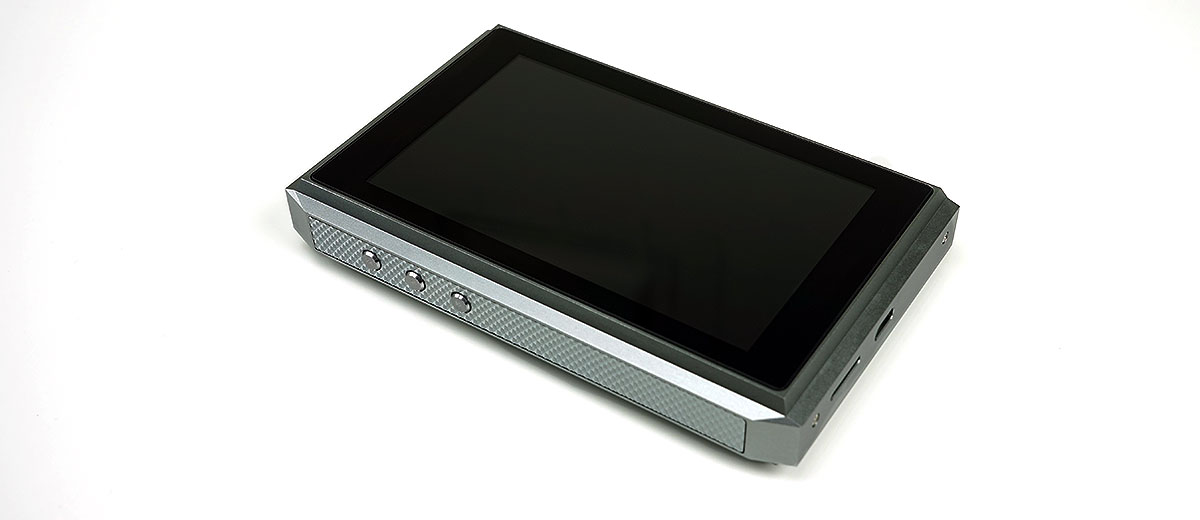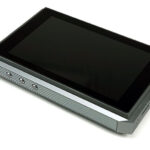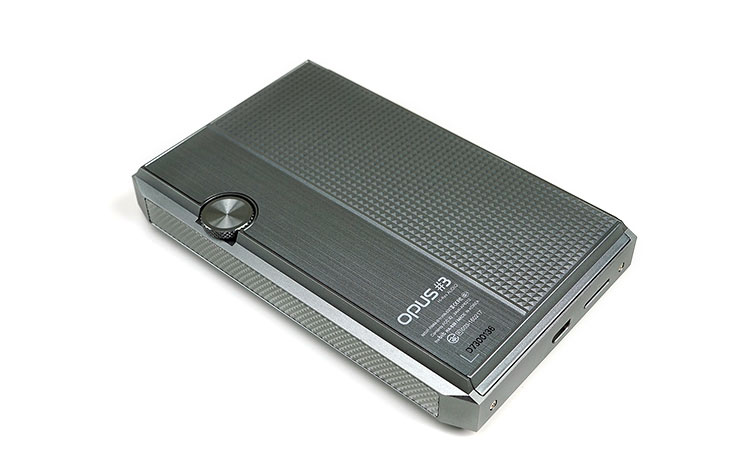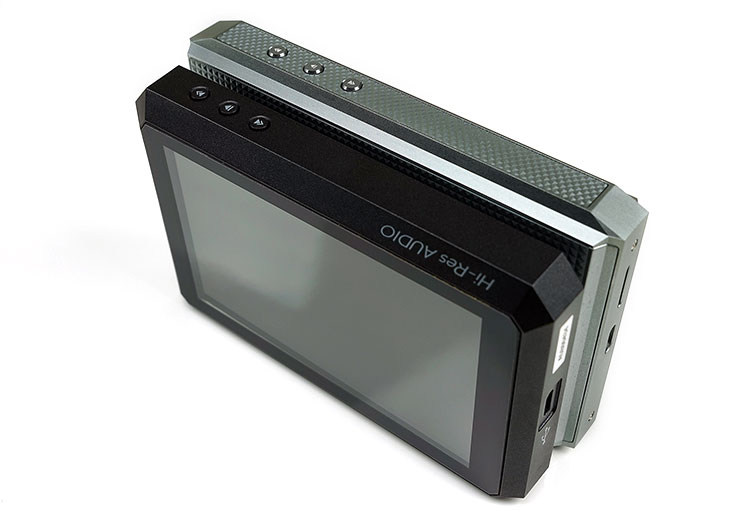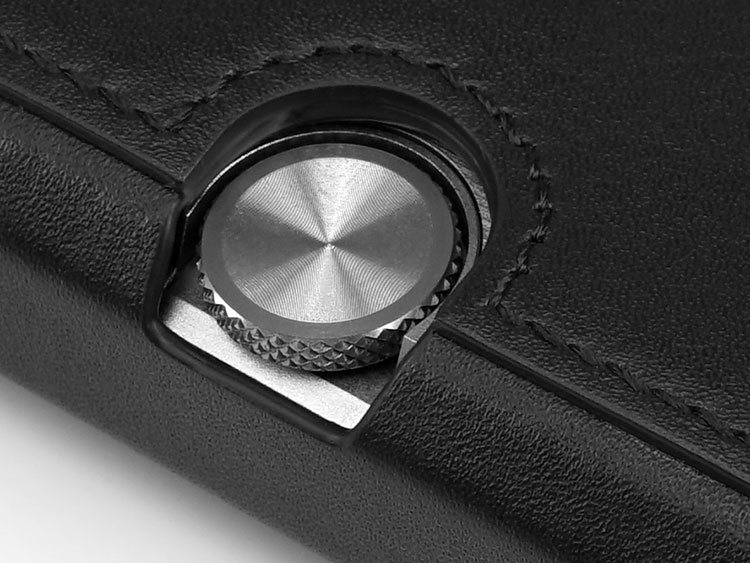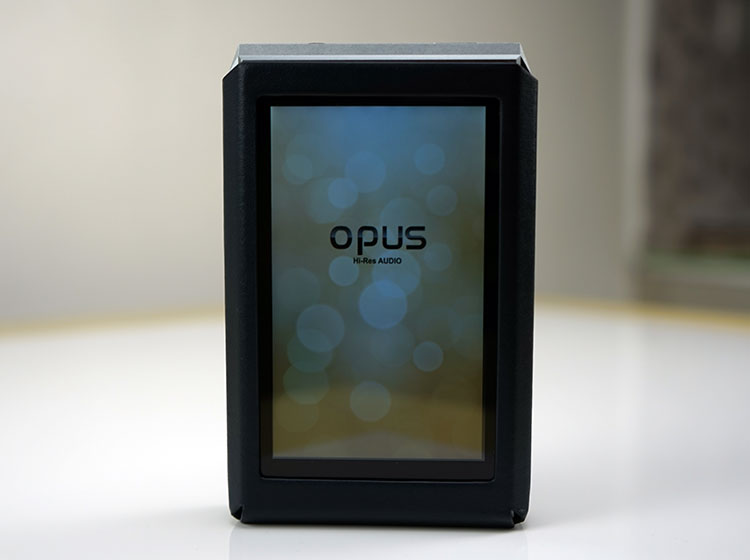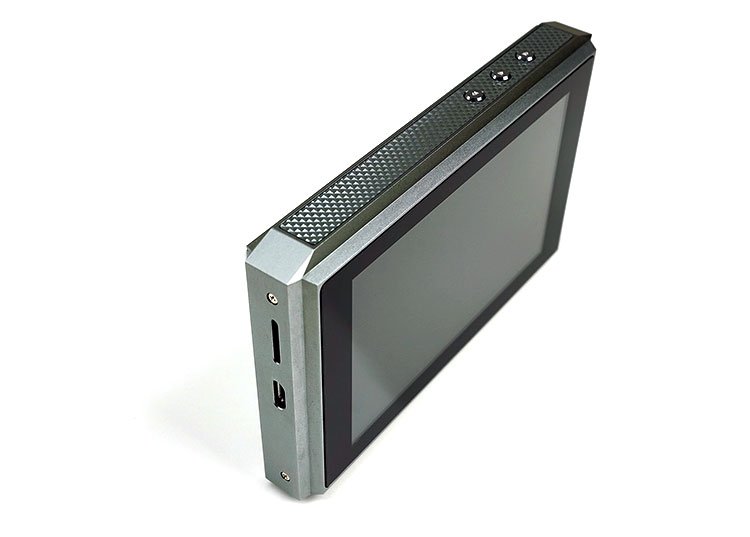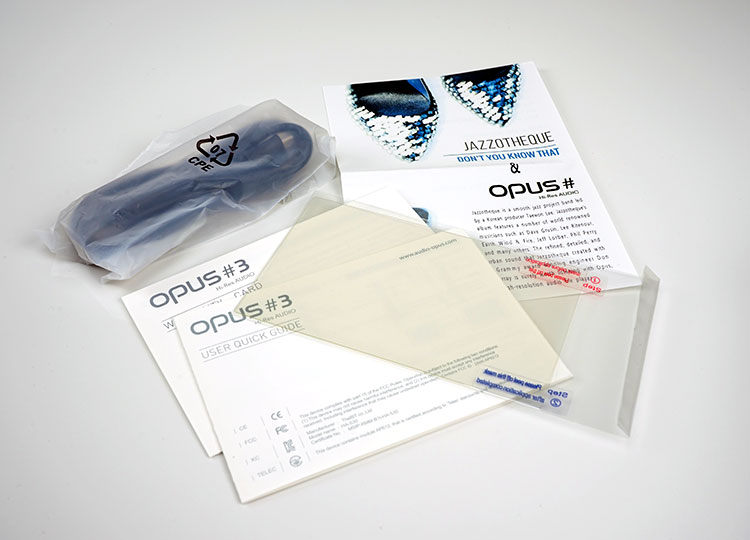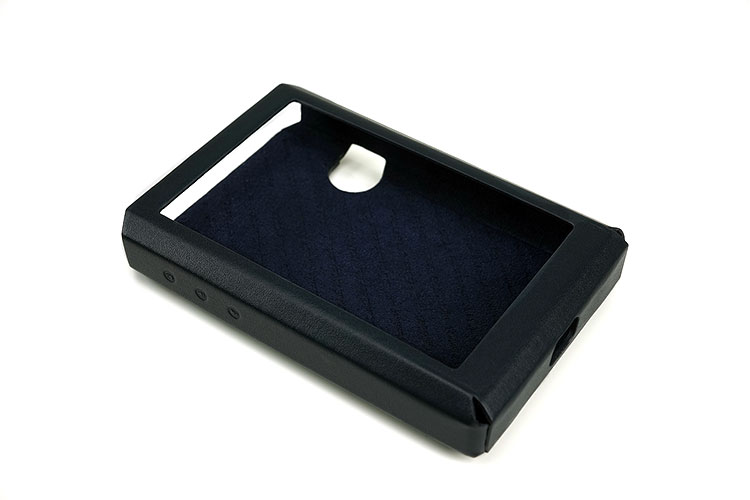Disclaimer: The Bit Opus#3 sent to us is a sample in exchange for our honest opinion in this review. We thank the team at The Bit for giving us this opportunity.
To read more about The Bit products we reviewed on Headfonics click here.
Note, this review follows our new scoring guidelines for 2021 which you can read up on here.
Three is greater than one but less than two. Or so it is according to Korean DAP specialists, The BIT. This counting conundrum caught me out by surprise when I met the team earlier this year in CanJam Singapore simply because as marketing roadmaps go this one is a bit crooked.
Having said that the new $899 Opus#3 DAP is now out and what you need to know is that it’s better than the Opus#1 but not as good as the more expensive Opus#2. Given the price points The Bit has laid out for each DAP I highly doubt they would disagree with that qualitative statement.
Certainly, there seems to be a greater sense of purpose and a better ‘message’ with the Opus#3 this time around. This is aimed clearly at what I call “new mid-fi” territory where the FiiO X7 and iBasso’s DX200 now reside.
Just so you know, I had an hour with the Opus#2 in Singapore this year so I will not be making references to it but the impression I got was very positive in terms of its performance.
What Is The Pitch?
Mid-Fi
AK started it with the $699 AK100 a number of years ago and until today the $500-$1000 price marker seems to be the sweet spot for price versus quality when it comes to DAPs. So much so I called it ‘new Mid-fi” given that a decent DAP in 2004, (does anyone remember the iRiver H120?) was around $399 and considered fairly high priced at the time. Today’s flagship DAP’s are pushing north of $3000 which is insane.
It is a vast pricing range and at times a confusing array of marketing memes to empty your wallet. At $899, The BIT is right in the thick of it with the Opus#3, competing with the FiiO X7, iBasso’s DX200 to name but a few. If you are shopping with these brands in mind then the BIT is offering you one more option to demo before you buy without having to go flagship.
Streaming
The Opus#1 has gone through a number of upgrades that the Opus#3 has directly benefited from such as the OS but without built-in wireless functionality and a gimped Android system, the Opus#1 had a somewhat limited feel compared to the more open system DAPs on the market in 2017.
The BIT has now added wireless to the OPUS#3 at a more affordable price than the Opus#2 making it more appealing to those who wish to stream and generally connect to the internet. The Opus#3 now comes packed with WiFi and BT 4.0 as standard and with a degree of trial and error, you can side load some apps that can make your browsing and playback a lot more interactive.
Change of DAC
Gone is the dual Cirrus Logic CS4398 DAC chip of the OPUS#1 and in comes a single Burr-Brown PCM1792A implementation. Now out of all the selling points of the new Opus#3, I find this one the most interesting.
I actually prefer Burr Brown over Cirrus Logic chips personally, at least in the designs I have heard to date. Burr Brown DACs traditionally have had higher real performance numbers than Cirrus Logic in benchmark testing. They are also usually a good bit easier to work with than ES chips not to mention the BOM costs are a touch lower considering the chip has been out for a long time.
Tonally, it also marks a change in character for the Opus#3 so those migrating from the Opus#1 may find the signature to be that bit warmer and more musical sounding than before which is a good thing in my book.
Design
Materials
The Opus#3 is a solid chunky and very angular DAP, much in the same vein as the Opus#1 metal edition with a tempered aluminum metal chassis though the back is curiously still, in fact, a plastic design. The use of plastics is apparently due to the unusual pyramidal uneven surface design of the back plate which The Bit felt was too challenging to make with metal at the price point they want to launch it at.
In all honesty, the stiffened plastic design is very discreet and meshes well with the rest of the alloy frame both in color and feel. It does not stand out or look cheap with a solid all-around brushed steel-like paint job. The only hint you get it is plastic is if you give it a light tap with your fingernail and you get that familiar slightly hollow ring to it like you get with most plastics.
The pyramidal theme is also continued on the sides of the Opus#3 giving it a nice grippy feel in the hand compared to the smoother Opus#1, particularly the plastic Opus#1 which is one of our house reference DAPs for the past year.
The materials used on the Opus#3 are a clear step up on the original hard plastics of the Opus#1 which does tend to have a bit of flex and creak in comparison to the rock solid Opus#3 chassis. Though the steel edition of the Opus#1 feels almost as solid it does lack the more nuanced CNC machined details of the new Opus#3 design.
Form Factor
Size
The Opus#3 is a little bigger than the Opus#1 but it still has a fairly user-friendly dimension and can be safely held in one hand. It is about 5mm longer and 2mm wider so not a huge increase. As a point of context, it is 5mm wider than the iBasso DX200 but over 50mm shorter.
Weight
The use of tempered aluminum has shot up the weight over the Opus#1 and there is a noticeable difference with the Opus#3 weighing in at 220g which is 35g more. That being said it is not a heavy DAP compared to the competitors with the X7 weighing the same and the DX200 coming in at 20g more at 240g.
Cornering
It is also a good deal sharper on the cornering than the previous Opus#1. It looks almost retro in some ways with the angular corners and to a certain extent, depending on how you will hold it, it will cause a measure of discomfort. Luckily The Bit does provide a very nice Dignis designed leather case which is top notch but sadly only as an optional extra. I do recommend you buy it because it makes holding the Opus#3 a lot more comfortable.
Volume Dial
Another big change up in the Opus#3 form factor is the change to a jog wheel just under the top plate on the right for volume control. Looking at it from the rear it’s actually a very attractive design and much easier to work with than the older twin button plus or minus digital volume control of the Opus#1. Technically it is a stepped attenuation mechanism with a healthy clicking sound from step to step.
Caveats
A few caveats I did notice when using it. One, you cannot reach the volume wheel when the Opus#3 is on a flat surface. The side panel overhang prevents you from being able to get to unless you have very tiny fingers or long nails. You can access it a little easier when using the leather case as it pushes up the dial a bit further from any flat surface to give you a little room underneath.
The second caveat, but a minor one is the amount of play in the wheel from side to side and true enough it is a little loose though it is hard to tell if that is on purpose or just lower QC.
Screen
The IPS screen panel is superior in clarity, saturation and viewing angles than the older 4-inch TFT Wide Touch Display found on the Opus#1. The dimensions, however, are the same at 480 x 800. The fitting on the Opus#3 screen is also a bit better with a slightly raised tempered touch panel and there is no gap between the panel and the chassis to collect dust.
The bezel on the Opus#3 is a bit bigger all round to compensate for the difference in chassis dimensions but it is not terribly noticeable. Touch sensitivity, as before, is excellent and superior to the DX200 experience with no lag.
Memory Capacity
One Slot
This seems a bit of a downgrade from the Opus#1 moving from a dual microSD slot with a rubber flap on the side to a single microSD slot with no cover on the bottom panel.
On paper, though the memory limit of each slot on the Opus#1 was limited to 200GB giving you a max of 400GB and the single slot on the Opus#3 is now 256Gb, however, it is still a little short of what was possible before. One can only presume the bill of materials to be too high with a dual slot combined with the alloy chassis design and The Bit needed to hit that mid-fi price point.
Internal Memory
Internal memory capacity has improved though from 32Gb to 64Gb which is a worthy upgrade and plenty to keep you rolling for the day without having to refer to a memory card unless you are rocking out on large hi-res tracks and need that additional space. Interestingly the specs say 128Gb onboard with optional in brackets so I am not sure if that is going to come out later or a specific upgrade you can ask for.
No OTG Memory
Currently, there is no option for OTG flash drive mounting which is no change from the Opus#1 but it would have been a nice feature considering there is the guts of Android on the Opus#3 and would have added up to 2Tb in additional storage capacity.
The Wireless Advantage
The one huge advantage, of course, is wireless which means the Opus#3 can tap into DLNA and shared network servers for additional resources and storage. Using something like oShare just changes the game for me, at least on a virtual level with potentially unlimited access to network storage.
Battery
The Bit have kept the 4,000mAh/3.7V Li-Polymer battery from the Opus#1, however, performance figures have dropped a little from around 10 hours to 8.5 hours with a similar charge time of 4 hours via its micro-USB slot. Personally, I think that’s just average, nothing special and in 2017 I would hope to have seen around 10-12 hours.
Admittedly the Opus#1 really didn’t churn out the full 10 because those ratings were very specific using LCD off mode but in real world usage scenarios I was not getting 8 hours with the Opus#3, perhaps closer to 7 to 7.5 with plenty of LCD poking and DSD decoding, lower with streaming and WiFi on.
There are a few mitigating reasons I am sure such as higher decoding capabilities and of course WiFi and the superior IPS screen though I am delighted they kept the Ultra Power Saving Mode from the Opus#1 which extends the standby time for up to a max of 4 weeks. This mode is pretty useful for travel where a battery charging opportunity is not always available.
I/O
Technically the majority of the I/O on the Opus#3 has not changed in position or functionality since the Opus#1. The two major changes are memory card slot positioning and volume controls. The position of the microSD slot has moved from the bottom of the left panel on the Opus#1 to the bottom panel, to the left, on the Opus#3. The volume is now controlled through the jog wheel on the right panel and not the digital +/- buttons of the Opus#1.
Apart from that the base panel still houses the micro USB port for charging, OTG digital audio and data transfer. The left panel houses the playback control buttons which are spaced out a little better now and benefit from better quality alloy materials over the Opus#1. They are also raised a little bit more and have a more tactile feel for navigating unseen.

Functionality
DAC
All change for DAC duties in the Opus#3. Out goes the dual Cirrus Logic CS4398 DAC chip of the OPUS#1 and in comes a single Burr-Brown PCM1792A implementation. Going from dual DAC to a single DAC may on the surface feel like a tiny downgrade but in actual fact, the PCM1792A is a highly regarded chip and more capable than the Cirrus Logic chips of the OPUS#1.
A look at some of the performance figures of both DAC chips and you can see why The Bit opted for the Burr Brown. The Burr-Brown PCM1792 has a superior SNR of up to 129dB with a rated THD of 0.0004% compared to the Cirrus Logic CS4398 which has a lower SNR of 120dB and a higher THD of 0.0007%.
The loaded figures inside the Opus#3 vary a little from the rated specs of the chips but on a 1KHz load, you are still talking a very respectable ≥114dB SNR and THD-N of 0.0009% @ 1KHz. As a point of comparison, the X7 is capable of a THD-N rating of 0.0007% (10 KΩ/1 kHz) and a very similar SNR of ≥115 dB.
In terms of decoding the Opus#3 has most popular codecs, BIT and sample rates covered including
- PCM: 16kHz ~ 192Hz (8/16/24bits per Sample)
- DSD Native: DSD64(1bit 2.8MHz, Stereo),
- DSD128(1bit 5.6MHz, Stereo),
- DSD256(1bit 11.2MHz, Stereo)
The inclusion of separate X-MOS chip now allows the Opus#3 to be able to playback native DSD files up to DSD256 without any requirement for conversion.
Amp
The output power of the Opus#3 is a little bit harder to draw a simple comparison with simply because they document it on the voltage measurements and the amp chips themselves have not been revealed nor the level of loading. What we do know is the unloaded numbers with the balanced output being a little bit more powerful than the single ended at 3.0Vrms compared to 2.5 Vrms.
Total output is therefore around 280mW under a 32-ohm load which places it closer to the AM2 amp module of the X7 and more powerful than the single 3.5mm output of the AM3 module.
In comparison though it is not as strong as the DX200 Amp 1 numbers which have a balanced out rating of 6Vrms and 3Vrms for the single ended output. You will see a greater difference in performance with the DX200 outputs than the Opus#3.
Accessories & Packaging
The Opus#3 comes in a professional but understated black box packaging design fairly typical of most modern DAP packages these days. Inside the DAP is well secured in a foam cutaway and it comes with a reasonable range of accessories including 2 screen protectors, data and charging micro-USB cable, warranty and quick user guide and a little promo guide on ‘Jazzotheque’, which is a reputable jazz project in Korea produced by Taewon Lee.
One of the two screen protectors is already semi-applied onto the screen of the Opus#3 so its just a matter of peeling it off and you are protected right away which is a little something I always appreciate from DAP makers. When you turn on the DAP you also get 3 hi-res music files from Jazzotheque on the internal storage and ready to play.
The Leather Case
One thing to note, the leather case that you see in the pictures here in the review is optional. Not all dealers are including it. Ironically when you open up the box there is a little cut away area at the base which is a perfect fit for the leather case inside its packaging. One wonders if that was a late decision to pull for cost reasons.
Dealers such as MusicTeck are including the leather case free of charge at the time of writing and I strongly encourage you to buy one and use it because the Opus#3 is a little sharp on the edges without one. It is also a heck of a beautiful Dignis designed case and nothing cheap in terms of materials and aesthetics but it is not the easiest to slide off.
Click on page 2 below for Software & Wireless Performance

